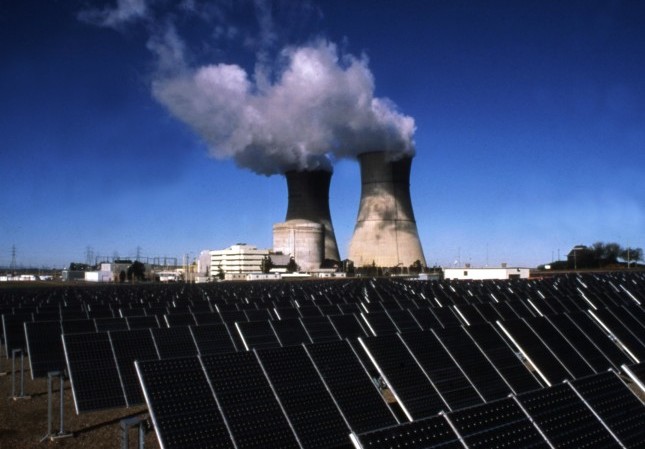-
Could Renewable and Nuclear Energy Be the Key to Fighting Climate Change?
September 3, 2019 By Shawn Archbold
“Today we face two existential threats: nuclear annihilation and catastrophic climate change,” writes Daniel Poneman, former Deputy Secretary of the Department of Energy, in his book, Double Jeopardy: Combating Nuclear Terror and Climate Change. “Both stem from human origins. We need to fight both threats aggressively.” At a recent event hosted by the Wilson Center, Poneman discussed his book. While the dangers of nuclear energy are clear from incidents like Fukushima and Chernobyl, Poneman proposes policies that aim to encourage a safe, non-carbon baseload power that responds to the Intergovernmental Panel on Climate Change (IPCC) 2018 report and keeps our global temperature rise below 2 degrees Celsius above pre-industrial levels, per the 2015 Paris Climate Agreement.
Assured Nuclear Fuel Services Initiative
One reason nuclear energy is less popular than other forms of energy, Poneman says, is because a country building a nuclear reactor must enter a 100-year customer relationship with a separate country that enriches uranium or it must enrich its own uranium. An Assured Nuclear Fuel Services Initiative would ensure that countries would not need to enrich their own uranium and prevent enrichment for nuclear weaponry, he said. If this program ran effectively, Poneman writes, “any assertions that a country ‘needs’ to build its own commercial enrichment plant to ensure a reliable supply of enriched uranium for commercial nuclear power reactors would then be far less credible.”
Climate Proofing Nuclear Reactors
Many environmental conservation organizations, such as the The Nature Conservancy, are now recognizing nuclear energy’s ability to produce large amounts of energy without emitting a single molecule of carbon, said Poneman. If more effort went into climate proofing nuclear reactors against climate events and warmer weather, said Sherri Goodman, a Senior Fellow at the Wilson Center, then more environmental organizations might also pledge their support for nuclear energy. The nuclear industry is working on climate proofing reactors, said Poneman. But other challenges, such as putting a price on carbon and preventing nuclear proliferation, slow its progress.
A Future for Nuclear and Renewable Energy
Even if all 187 countries that signed the Paris Climate Agreement followed through completely on their pledges, we would still be significantly behind the IPCC goal, and most countries are not even on track, said Poneman. The only way to close the gap, he said, is to aim for negative emissions by significantly expanding nuclear energy to balance the intermittency problems that come with renewable energy.
In his book, Poneman offers a call to action: “A coherent American energy policy can make an indispensable contribution to the efforts to combat both the threat of nuclear annihilation and the threat of catastrophic climate change, while promoting the prosperity and well-being of people in the United States and around the world.”
Read More:
- Nuclear, climate, and security risks are converging in new ways.
- Slowing population growth could lead to less greenhouse gas emissions.
- Climate change needs global governance similar to nuclear arms control treaties .
- Climate change poses risks of higher probability and consequence now than the nuclear threat during the Cold War era.
Sources: Climate Action Tracker, “Double Jeopardy: Combating Nuclear Terror and Climate Change” by Daniel Poneman, Intergovernmental Panel on Climate Change, International Atomic Energy Agency, The Guardian, The Nature Conservancy, The World Bank, Union of Concerned Scientists, United Nations Framework Convention on Climate Change, University of Calgary Energy Education, World Nuclear Association.
Photo Credit: View of SMUDPV1 Photovoltaic Panels, with the Twin Cooling Towers of the Rancho Seco Nuclear Plant in the Background. July 2014. Courtesy of the U.S. Department of Energy.
 A Publication of the Stimson Center.
A Publication of the Stimson Center.



